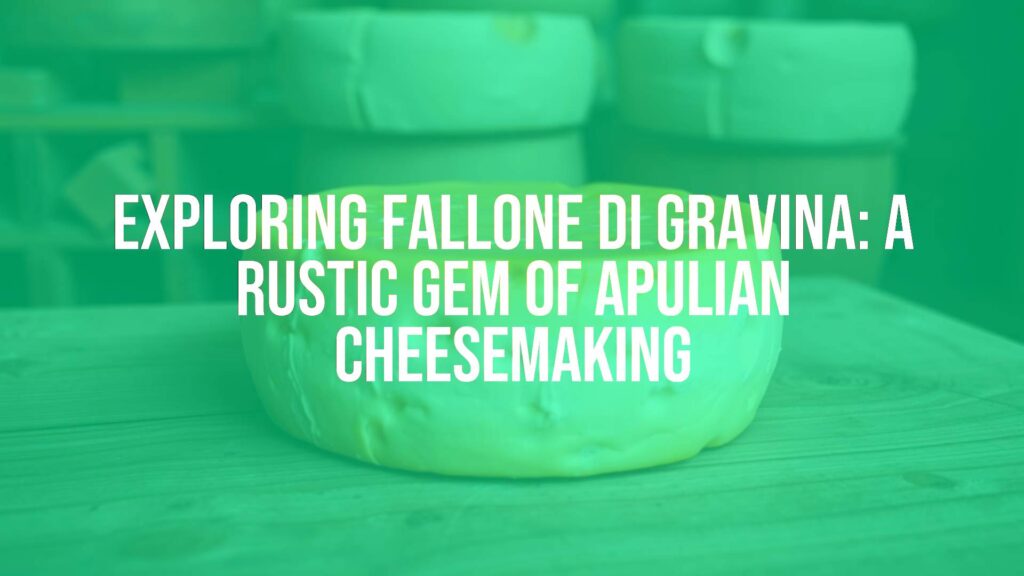Introduction to Fallone di Gravina
Fallone di Gravina is a distinctive Italian cheese that traces its origins to Gravina in Puglia, a town perched atop rocky terrain in the picturesque region of Apulia. Renowned for its robust character and rustic production methods, this traditional cheese offers a taste of Italy’s pastoral heritage and a reflection of the ancient skills that continue to define southern Italian cheesemaking.
What Makes Fallone di Gravina Unique?
The defining trait of Fallone di Gravina lies in its use of raw sheep’s or mixed sheep and goat’s milk, which imparts the cheese with a rich, layered flavor profile. Unlike more widely-known Italian cheeses, Fallone di Gravina is typically a very young, fresh cheese—sometimes even served just hours after being crafted. It has a soft, moist texture, often with a slightly uneven rind formed by the rush of whey during its early aging process. The flavor is gently milky, with delicate grassy and herbal undertones that reflect the local pasturelands near Gravina.
Historical Background
Cheesemaking in Gravina boasts centuries-old roots, closely connected to the town’s agrarian and pastoral traditions. The name “Fallone” is thought to derive from the local dialect, referencing the container or basket used in the cheese’s early draining process. Historically, Fallone di Gravina was a staple in the diets of shepherds and farming families, providing a readily available source of nourishment in rural settings. This cheese remains a symbol of the agricultural resilience and culinary ingenuity of Apulia.
Production and Artisan Craft
The methods involved in making Fallone di Gravina are simple and time-honored. Freshly milked sheep’s (or sometimes a mix with goat’s) milk is heated and then coagulated using natural rennet. Once curds form, they are gently gathered and transferred to traditional rush or wicker molds, which help drain the whey while imparting a faint imprint to the outer surface. The cheese is rarely aged beyond a few days; instead, it is celebrated for its immediacy and rustic freshness, although in some areas, a slightly matured version with a firmer texture can be found.
Cultural Significance and Regional Enjoyment
Fallone di Gravina is more than just a cheese—it is an emblem of local identity in the Gravina area. It is particularly associated with local fairs, traditional gatherings, and the seasonal rhythms of rural Apulia. Because of its freshness, it is most commonly enjoyed at the peak of spring and early summer, aligning with the high-quality milk produced by grazing sheep and goats at this time of year.
Typical Pairings and Culinary Uses
The mild and creamy nature of Fallone di Gravina lends itself to a variety of traditional pairings. It is often enjoyed on its own with a sprinkle of salt and a drizzle of extra-virgin olive oil, or as part of rustic antipasti platters alongside olives, cured meats, and freshly baked bread. At local tables, the cheese may also be featured in simple salads or paired with seasonal vegetables, such as tomatoes or wild greens. Crisp white wines from Puglia, like Gravina DOC or Fiano, complement the cheese’s gentle flavors.
Serving Suggestions and Tips
Because of its ephemeral freshness, Fallone di Gravina is best savored soon after purchase. For an authentic experience, enjoy the cheese at room temperature to allow its natural aromas and creamy consistency to bloom. Try serving it with crusty bread and a touch of freshly cracked black pepper, or, for a more local touch, with a side of roasted or pickled vegetables typical of Apulian cuisine.
Conclusion
Though not as widely known as some Italian cheeses, Fallone di Gravina offers a glimpse into the deeply rooted cheese traditions of southern Italy. With its fresh flavor, artisanal spirit, and enduring cultural ties, this Apulian specialty continues to delight those who seek the genuine tastes of the Italian countryside.

